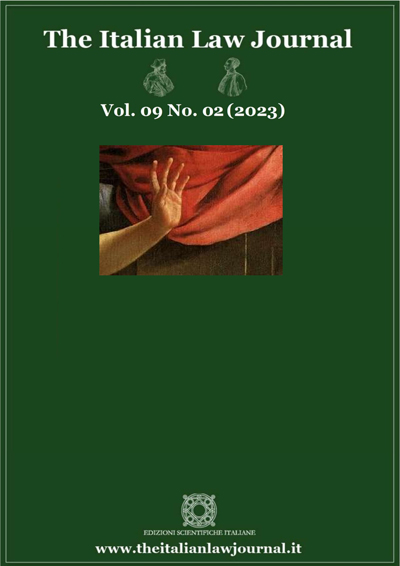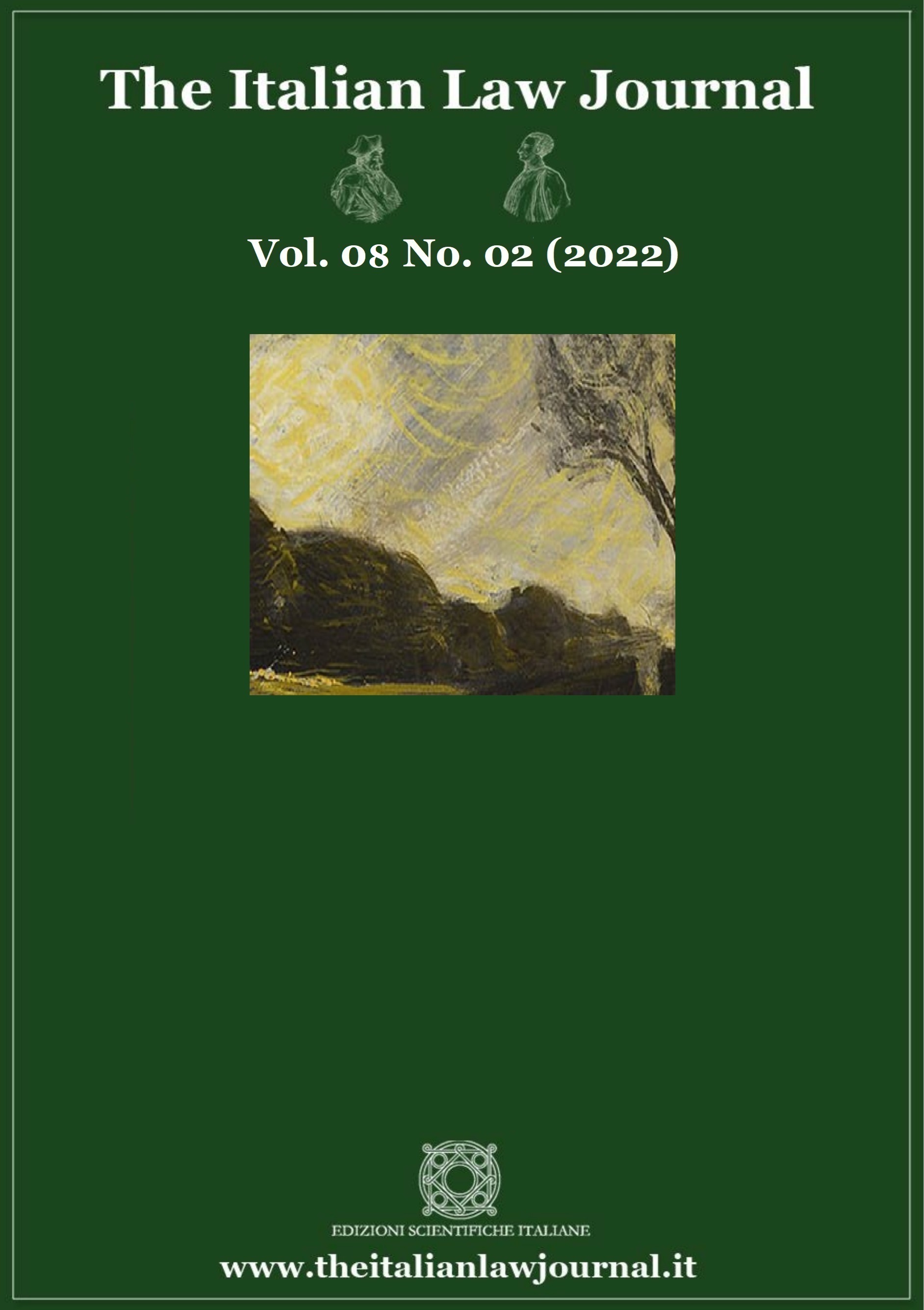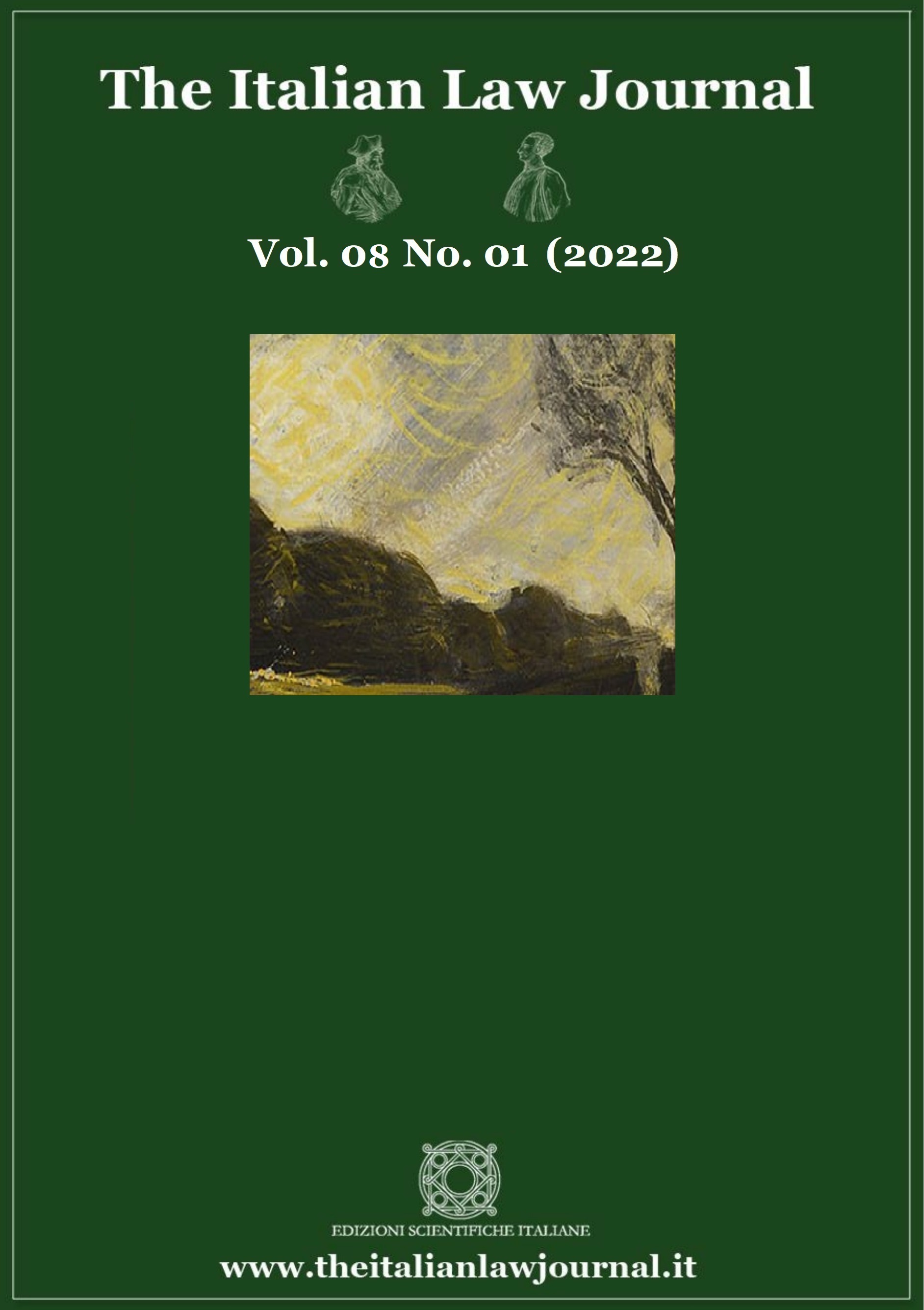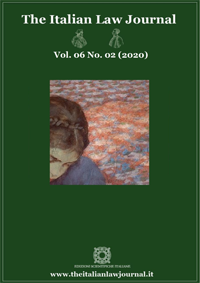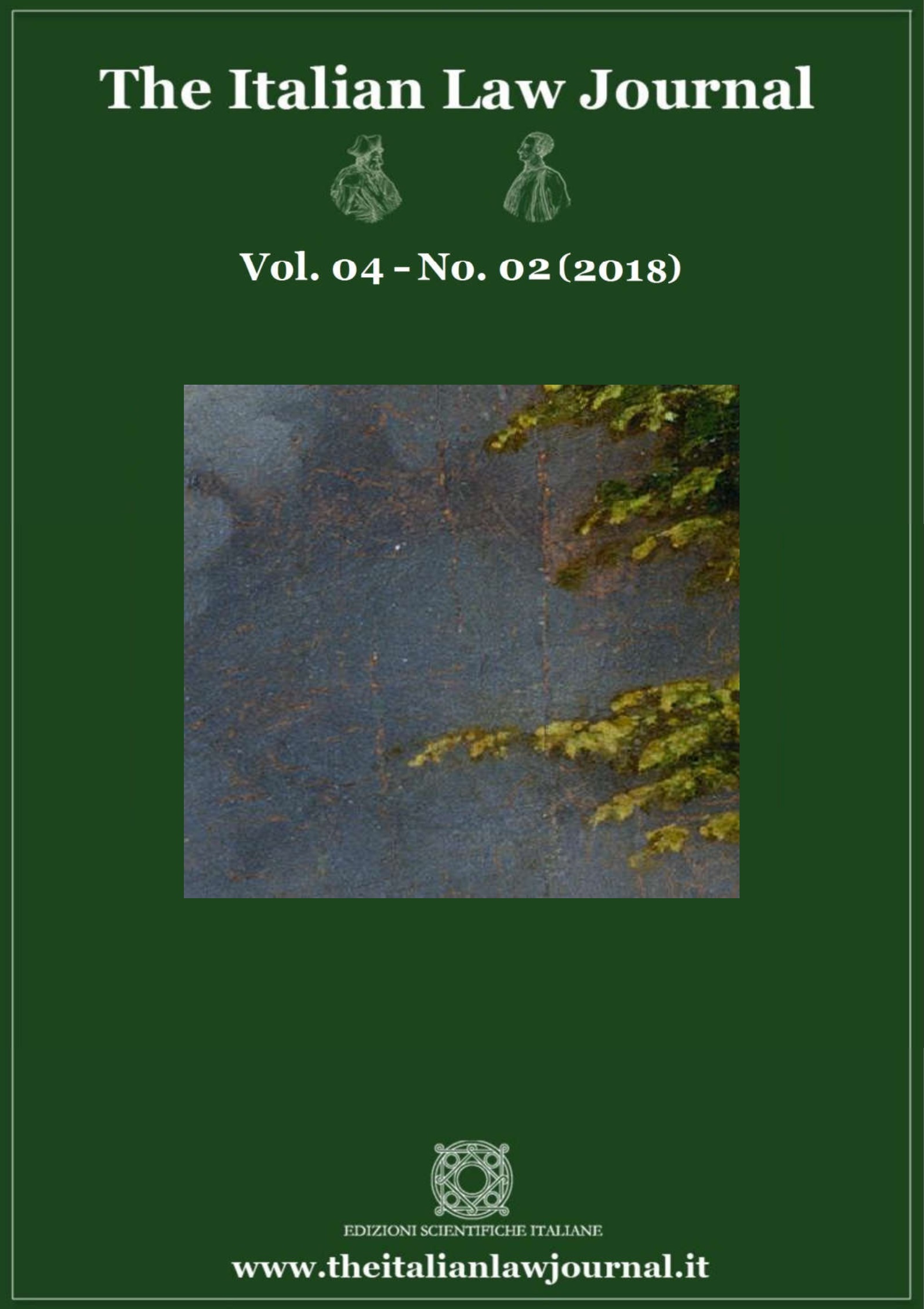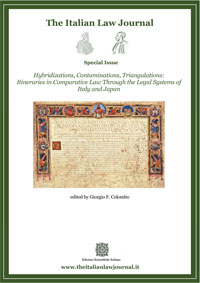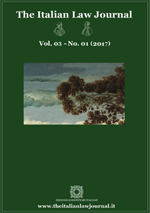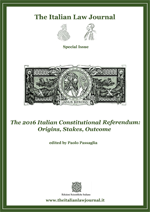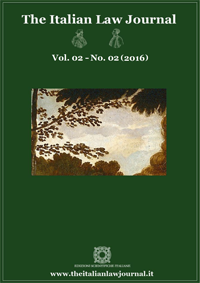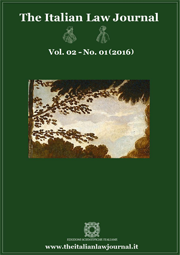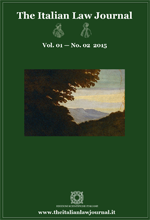SPECIAL ISSUE Hybridizations, Contaminations, Triangulations: Itineraries in Comparative Law Through the Legal Systems of Italy and Japan edited by Giorgio F. Colombo by G.F. Colombo _____________________________ Legal Systems and Legal Families: by A. Ortolani This article analyses the role and the significance of taxonomies in modern comparative law, taking the classification of Italy and Japan as examples. The first part explains the concepts and purposes of taxonomies in science and in comparative law. The second part analyses the reasons why Italy and Japan are often classified as civil law countries […] _____________________________ by A. Miranda This paper assumes that the modern migratory flows, together with the enormous circulation of people and rules, still involve the ‘bleeding’ of alien principles and practices on the canvas of the host legal system. Accordingly the paper investigates the ‘limits’ beyond which the order ends up responding to the protection of its integrity […] _____________________________ by P. Digennaro The essay provides a comparative overview of the laws concerning discrimination of disabled workers and the employment of persons with disabilities in Italy and Japan. Both legal systems combine a quota-levy system with antidiscrimination dispositions. Also, Japan recently embedded a human-rights approach including a prohibition on workplace discrimination […] _____________________________ Indirect Discrimination in Japanese Law: by M. Riminucci In Japan, the equality principle is embodied in Art 14, para 1, of the Constitution, according to which all citizens are equal under the law and cannot be discriminated against on grounds of race, creed, sex, social status or family origin, in political, economic or social relations. As a corollary, Art 3 and Art 4 of the Labor Standards Act establish the principle of equal treatment. […] _____________________________ The Protection of Our Image: by P. Polito Through an analysis of the privacy right of publicity (or ‘personality rights’) in the American legal system and the right to one’s own image in the Italian legal system, the authors demonstrate the strict analogies that exist between these legal institutions, despite the differences in their origins. […] _____________________________ by G. Mannocci Cybersecurity and privacy protection are strategic objectives to ensure free trade and economic freedom in a global society. Precisely for this reason, recently, the European Union and Japan have changed their legislation on the protection of personal data, strengthening the powers of control and regulation by public bodies. […] _____________________________ by M. Dragoni This article compares how software inventions are protected by patent law in Italy (and the European Patent Convention (EPC) system), United States and Japan. Notwithstanding said legal systems appear to be so distant one from the other, surprising similarities may be found. The article describes such findings and attempts to provide an explanation […] _____________________________ Scientific Evidence and Criminal Proceedings: by G. Gennari and T. Matsuda The use of scientific evidence in court raises several problems in both Italian and Japanese jurisdictions. The authors, starting from the problem of admissibility, discuss two main cases of misuse of scientific evidence: the Amanda Knox case in Italy and the Ashikaga case in Japan. In both cases the trial court condemned the defendant on the basis of corrupted science (DNA fingerprint). […] _____________________________ Current Situation of Consumer Bankruptcy in Japan by M. Sakuramoto In Japan, starting with the bursting of the bubble economy in the early 1990s, and followed by a series of crises, such as the global financial crisis caused by the Lehman Brothers Shock of 2008, and the Great East Japan Earthquake of 11 March 2011, the economic life of consumers has been heavily affected by a serious, long term economic depression. […] _____________________________ Contribution-Benefit Relationship in Social Security in Italy and Japan by S. Kojima Regarding social security in Italy, any bilateral or corresponding relationship between contribution and benefit is considered denied, following the ‘social security benefit automaticity principle’ under Art 2116 of the Italian Civil Code of 1942. Meanwhile, in Japan, some connection between contribution and benefit in the social insurance system is generally considered almost self-evident. […] _____________________________ Legal Families and the Birth, Growth and Death of a Corporate Law Rule by S. McGinty This paper explores the limits of the concept of legal family in the context of corporate law, where scholarship has given it a prominent role in explaining differences in legal evolution. It does so by comparing the lifespan of a single rule which, owing to historical coincidence, Japan and Ontario both enacted in the 19th century. […] _________________________________ Is the CISG a Useful Tool for the Interpretation of the Newly Reformed Minpō? by F. Serena In this article I am considering the role of the CISG in interpreting the recently reformed Minpō, the Civil Code of Japan. The Minpō was promulgated by the end of nineteenth century and had never experienced a real structural reform. However, on 26 May 2017, the National Diet of Japan approved a radical reform of the Minpō. […] ************************* The 2016 Italian Constitutional Referendum: Origins, Stakes, Outcome edited by Paolo Passaglia by P. Passaglia PART I Learning Democracy from the History of Constitutional Reforms by J. Luther This article shows how the history of constitutional reforms in Italy helps its people to learn constitutional democracy. This history is first of all a history of the amendment rules that suffered derogations and have not been changed. Two stories must be told: a story of the reforms that have been approved and a story of the unsuccessful reform proceedings. […] _____________________________ by G. Romeo The essay analyses the Italian Constitutional Reform of 2016, starting from provisions concerning the frame of government and specifically the overcoming of the Italian model of ‘perfect bicameralism’. The essay then explores the reform of the relationships between the State and the Regions, which were successfully reorganised in 2001 but still occupy the most significant part […] _____________________________ Yes or No? Mapping the Italian Academic Debate on the Constitutional Reform by G. Delledonne and G. Martinico The recent campaign for the constitutional referendum was perceived as highly divisive even in the academic world. The aim of this paper is to ‘map’ the academic debate concerning the Renzi-Boschi constitutional reform rejected by Italian people in the referendum held on 4 December 2016. This survey does not look at the contents of the reform, rather it focuses on the arguments […] _____________________________ by E. Stradella The aim of this paper is to illustrate and critically discuss events, debates, legal and political facts developing after the rejection of the constitutional reform by the constitutional referendum occurred in the past December. In the section I the paper takes into consideration the crisis of government, underlining its characters and peculiarities; in the section II it studies the consequences […] PART II The Constitutional Reform, between a Lost Opportunity and a Negative Outlook by B. Caravita di Toritto _____________________________ The Paradoxes of Constitutional Reform by P. Carrozza _____________________________ For an Effective Improvement of Our Institutions by U. De Siervo _____________________________ by G.F. Ferrari Referendums, Constitutional Reform and the Perils of Popular Sovereignty by P.J. Leyland _____________________________ by J. Mazzone _____________________________ by P. Pasquino _____________________________ by D. Shefold
Italy and Japan in Comparative Perspective
A European Perspective
Between the Right to One’s Own Image and the Right of Publicity
The Italian and Japanese Experience
Constitutional Reform in Italy: Past and Present
Views on the Future of Constitutional Reform







